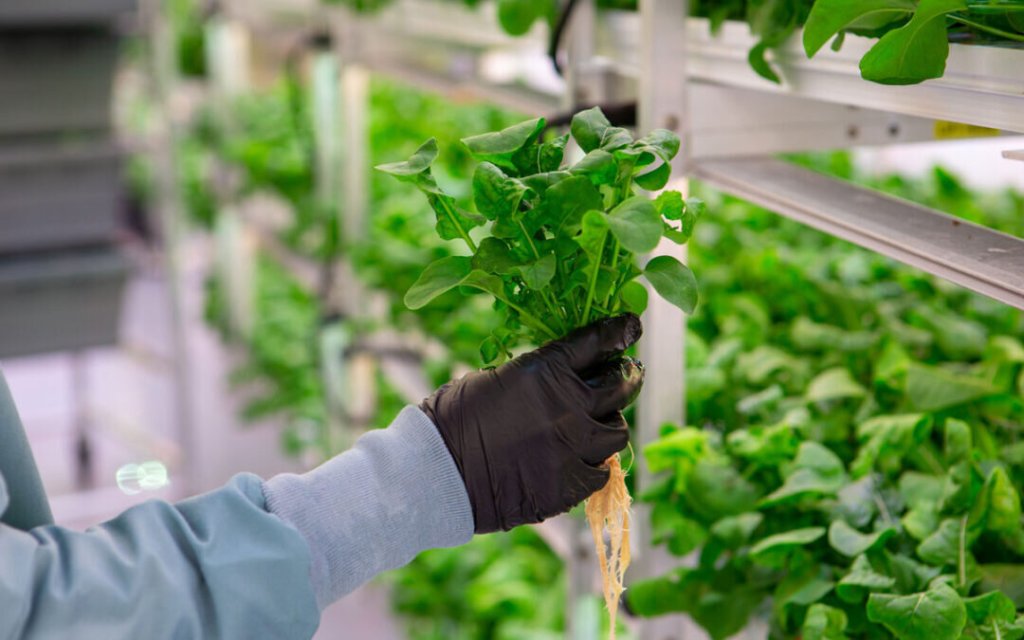Hydroponics can be a tough nut to crack at first, but it should all start flowing seamlessly once you get the hang of things.
We’re here for those who are stuck, as well as those who don’t know where to start when it comes to hydroponic systems. From this method’s purpose and different types to the plants you can grow and the ways to grow them, we’ll give an overview of each today to help you move forward in your hydroponics journey.
How Does Hydroponics Work?
In a nutshell, hydroponics is a method of growing plants that don’t involve anything other than water, a growing medium, and nutrients.
It comes from the root words “hydro,” which means water, and “ponos,” which means labor. What makes this gardening practice so unique is that it does not include soil. Instead, hydroponic practitioners use mediums like perlite, coconut coir, vermiculite, and others for growing plants.
Essentially, the key to hydroponics is eliminating barriers between nutrients, water, and oxygen and the plant’s roots.
There are different ways to engage in hydroponics, depending on what suits your preference and circumstances best. However, let’s first take a look at this planting method’s benefits before we move on to its different types.
Benefits of Hydroponics
The most obvious benefit of this practice is the drastic increase in growth rate for most plants. It’s not uncommon for practitioners to notice at least a 20 percent boost in their plant’s rate of growth compared with soil gardening. Additionally, there’s usually 25 percent more yield for hydroponic garden plants compared to soil plants.
That’s because water, air, and nutrients no longer have to pass through anything to get into the plant’s system. They’re absorbed by the roots directly and converted into energy for faster growth.
Keep these amazing benefits in mind as you contemplate which hydroponic system below to adopt.
Hydroponic Systems
There are six in total, namely:
- Wick systems
- Nutrient film technique
- Aeroponics
- Drip systems
- Flood and drain systems
- Deep water culture
Let’s find out more about them in detail.
Wick Systems
The most basic hydroponic gardening practice is the wick system. It’s been used since ancient times, but it wasn’t a system of hydroponics back then.
Wicking systems are a lot more passive than their counterparts, meaning you don’t usually need air or water pumps to practice them. It’s as minimal as hydroponics can get, and we recommend it for beginners.
Deep Water Culture
Another comparatively easier hydroponic system to get started with is deep water culture. It involves using a reservoir to contain a nutrient solution and suspending your plants’ roots in that solution. There, the plants gain direct access to all the nutrients, water, and oxygen they need to grow.
Nutrient Film Technique
One of the most popular systems for hydroponics is the nutrient film technique.
This method entails growing plants along channels that have nutrient solutions running in them. As the solution reaches the channel’s end, it drains onto the main reservoir that cycles it back into the system. It’s similar to deep water culture in that it recirculates the solution and doesn’t waste it.
Flood and Drain
The flood and drain system, also known as an ebb and flow system, is a method of hydroponics that is comparatively less popular than its counterparts. Nevertheless, it’s quite effective and might still be the best choice, depending on your circumstances.
The previous hydro systems discussed involved exposing the roots of plants to a solution. This one doesn’t. Instead, plants are placed in trays with growing mediums. These trays are then flooded with solutions several times a day based on the following:
- Plant size
- Plant water requirements
- Air temperature
- The current growth cycle of plants
Aeroponics Systems
The most advanced of these systems is the Aeroponic system. There’s considerably more tech involved in this setup compared to the others, but it’s still a relatively easy one to build. Plus, it’s not too complicated to understand.
Similar to the nutrient film technique, aeroponics exposes roots to nutrients by suspending them in the air. However, the difference is that the nutrient solution is misted instead of running along the roots.
Drip Systems
The drip system is quite common commercially, but it is rarely done recreationally. That might have to do with the large-scale setups involved in operating this kind of hydroponic system.
This system simply isn’t a practical implementation for smaller gardens. That said, it’s an effective and efficient way to “hydroponically” grow your plants, so go for it if the situation permits.
Wrapping Up
There you have it! We hope you enjoyed this brief but comprehensive discussion on hydroponics.
Hydroponics is not for everyone, and it might entail more work than soil gardening, but it is one of the most effective ways to grow a garden today. Plus, it’s safe for the environment when done correctly, which makes it a win in our book!

